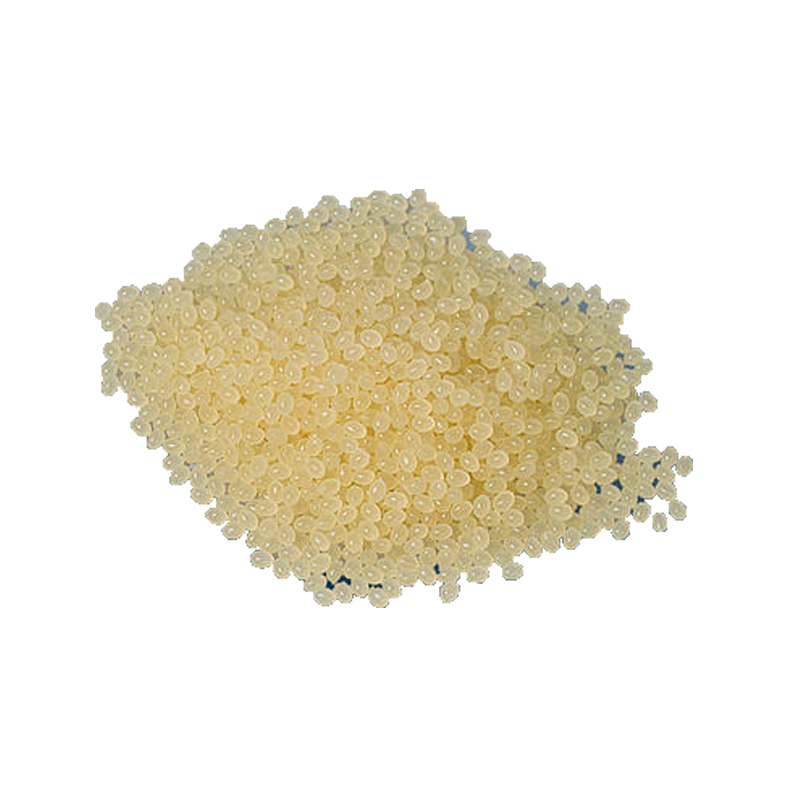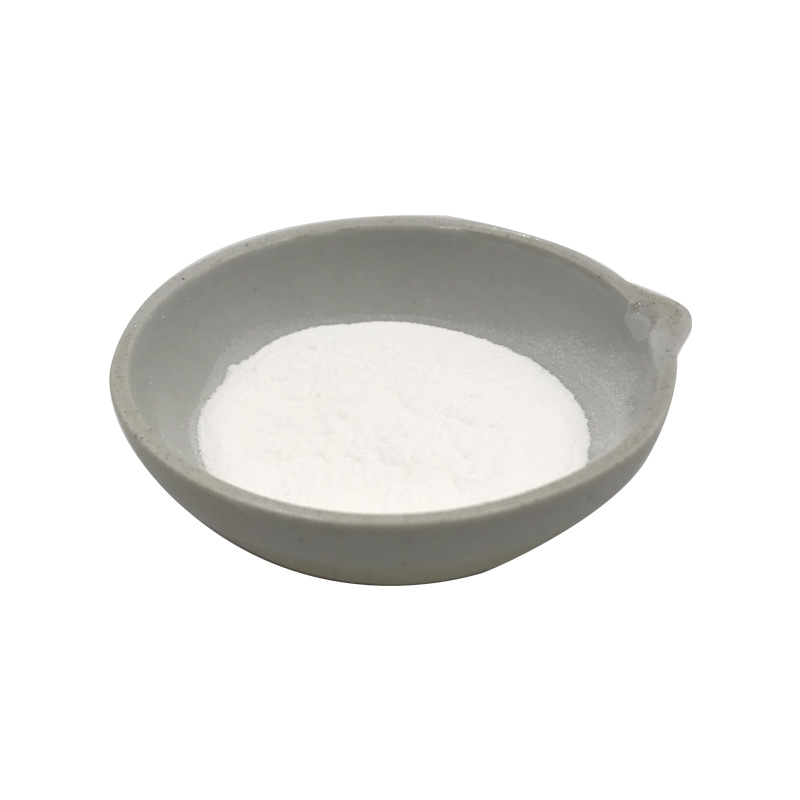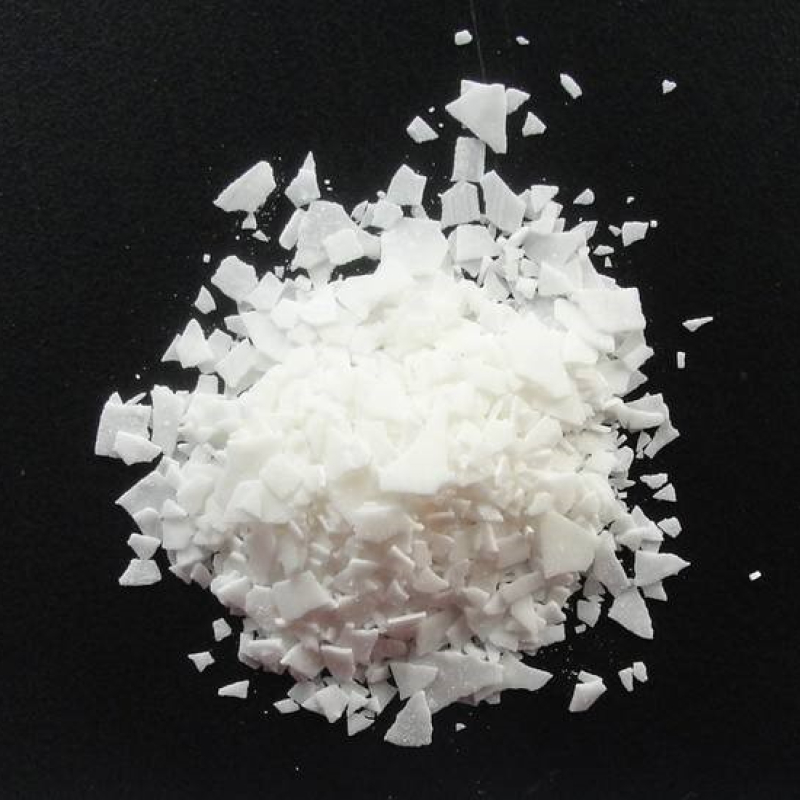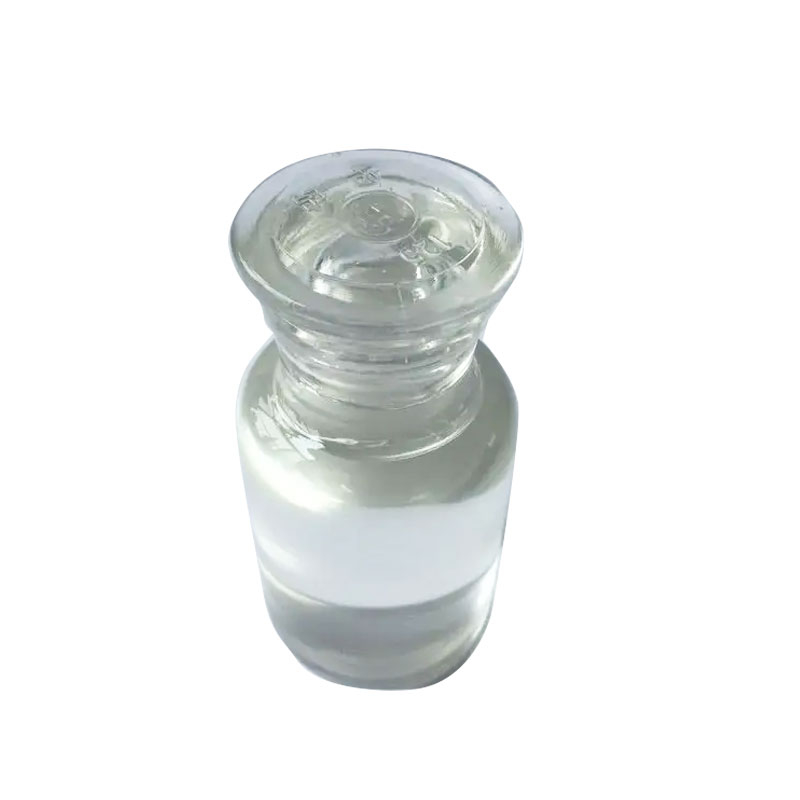Products Description of K-CATALYST CAS#1318-93-0Montmorillonite, also known as microcrystalline kaolinite or collinite, is an aluminosilicate whose main component is octahedral montmorillonite particles. It was named after it was first discovered in Montmorillonite, France. . Montmorillonite is a very soft phyllosilicate mineral that forms microscopic crystals called clays when they precipitate out of aqueous solutions.
Kontaktieren Sie mich jetzt
O-(Tetrahydro-2H-pyran-2-yl)hydroxylamine CAS#6723-30-4O-(Tetrahydro-2H-pyran-2-yl)hydroxylamine Chemical PropertiesMelting point 34-37 °C (lit.)Boiling point 81 °C/20 mmHg (lit.)density 1.1274 (rough estimate)refractive index 1.4206 (estimate)Fp 180 °Fstorage temp. Keep in dark place,Inert atmosphere,Store in freezer, under -20°Csolubility DMSO (Slightly), Methanol (Slightly)pka3.28±0.20(Predicted)form Low Melting Solidcolor WhiteSafety InformationHazard Codes XiRisk Statements 36/37/38Safety Statements 26-36WGK Germany 3HS
Kontaktieren Sie mich jetzt
Products Description of Poly(tetrahydrofuran)CAS#25190-06-1Polytetrahydrofuran is a white waxy solid that is easily soluble in alcohols, esters, ketones, aromatic hydrocarbons and chlorinated hydrocarbons, but insoluble in aliphatic hydrocarbons and water.
Kontaktieren Sie mich jetzt
POLY(METHYLSTYRENE-CO-INDENE) CAS#69430-35-9It has good thermal stability and chemical stability, and is not prone to chemical reactions under normal conditions. However, under extreme conditions such as high temperature, strong acid, and strong alkali, its chemical structure may be affected to a certain extent.
Kontaktieren Sie mich jetzt
Products Description of Poly(methylhydrosiloxane) CAS#63148-57-2Polymethylhydrogensiloxane is a silicone oil used in biology and chemistry. Under the action of metal salt catalysts, it can cross-link into a film at low temperature, forming a waterproof film on the surface of various materials.
Kontaktieren Sie mich jetzt
Products Description of POLY(METHYLSILSESQUIOXANE) CAS#68554-70-1White powderPOLY(METHYLSILSESQUIOXANE) Chemical Propertiesdensity 1,08 g/cm3refractive index 1.42Fp >121°Csolubility Insoluble in water.form SolidSpecific Gravity1.08color Clear. White.EPA Substance Registry SystemSilsesquioxanes, Me (68554-70-1)Safety InformationRisk Statements 36/37/38Safety Statements 26-36/37/39TSCA YesFactory and Equipment ShowFast delivery timeInventory 2-3 working days New production 7-10 working days
Kontaktieren Sie mich jetzt
POLY(DIMETHYLAMINE-CO-EPICHLOROHYDRIN) Chemical Propertiesdensity 1.1 g/mL at 25 °Crefractive index n20/D 1.427CAS DataBase Reference25988-97-0EPA Substance Registry SystemMethanamine, N-methyl-, polymer with (chloromethyl)oxirane (25988-97-0)Safety InformationHazard Codes XiRisk Statements 38-41Safety Statements 23-26-36/37/39WGK Germany 3Factory and Equipment ShowFast delivery timeInventory 2-3 working days New production 7-10 working days
Kontaktieren Sie mich jetzt
Poly(oxy-1,2-ethanediyl), .Alpha.-Hydro-.Omega.-Hydroxy-, Mono-C12-14-Alkyl Ethers, Phosphates CAS#68511-37-5The molecular structure contains polyoxyethylene segments, hydroxyl groups, C12-14 alkyl ether and phosphate groups. This unique structure enables it to have multiple properties. It has good surface activity, can reduce the surface tension of the liquid, and play the role of emulsification, dispersion and wetting at the interface.
Kontaktieren Sie mich jetzt
Products Description of diisooctyl 2,2'-[(dioctylstannylene)bis(thio)]diacetateCAS#26401-97-8Mainly used in PVC products that come into contact with food and medicine, such as plates, sheets, films, etc., and can be used in processes such as calendering, blow molding, extrusion, injection, etc.diisooctyl 2,2'-[(dioctylstannylene)bis(thio)]diacetate Chemical Propertiesdensity 1.08[at 20℃]vapor pressure 0Pa at 25℃storage temp. Refrigerator, under inert atmospheresolubility Chloroform (Slightly), Ethyl Acetate (Slightly)form Oilcolor ColourlessWater Solu
Kontaktieren Sie mich jetzt
Products Description of TrichloroethyleneCAS#79-01-6Trichloroethylene (TCE), also known as acetylated trichloroethylene, is a colorless, slightly sweet volatile liquid and a highly soluble solvent. It is insoluble in water but soluble in organic solvents such as ethanol and ether. It is non-flammable under normal conditions.
Kontaktieren Sie mich jetzt
Products Description of DIMETHYL DICARBONATE CAS#4525-33-1Dimethyldicarbonate (DMDC), also known as Vigorin, is a fruit juice beverage preservative permitted for use in my country's food additives standards (INS No. 242). At room temperature or even low temperature, DMDC has a strong killing ability against many contaminating bacteria in fruit juice beverages. Its antiseptic effect is closely related to the modification and inactivation of key enzyme proteins in the bacteria by DMDC.
Kontaktieren Sie mich jetzt
Products Description of Maltose CAS#69-79-4Maltose is the abbreviation of maltobiose, also known as D-maltose and maltose. A disaccharide formed by connecting, condensing, and dehydrating two molecules of α-D-glucose through α-1,4 glycosidic bonds. There is also a free hemiacetal hydroxyl group in the molecule, which is a reducing sugar. Like glucose, it can make Doron's reagent and Fehling's reagent react positively.
Kontaktieren Sie mich jetzt
Products Description of Isosorbide dimethyl ether CAS#5306-85-4 Isosorbide dimethyl ether is a colorless oily liquid. It is very stable under neutral conditions, hygroscopic, and miscible with many organic solvents. It is often used as a solvent. DMI can promote the penetration of active ingredients into the epidermis of the skin and give full play to the effectiveness of active ingredients.
Kontaktieren Sie mich jetzt
Products Description of 2,5-Dimethyl-2,4-Hexadiene CAS#764-13-62,5-Dimethyl-2,4-hexadiene is a chemical,Insoluble in water, soluble in alcohol and ether.2,5-Dimethyl-2,4-hexadiene Chemical PropertiesMelting point 12 °CBoiling point 132134°Cdensity 0.773 g/mL at 25 °C(lit.)vapor density 3.8 (vs air)vapor pressure 26.9 mm Hg ( 37.7 °C)refractive index n20/D 1.476(lit.)Fp 85 °Fstorage temp. Flammables areasolubility Chloroform, Ethyl Acetateform Oilcolor Clear ColourlessBRN 1733342LogP3.500CAS DataBase Refer
Kontaktieren Sie mich jetzt
Products Description of Dimethyl Disulfide 99.5% MIN CAS#624-92-0Dimethyl disulfide is an organic compound with the chemical formula C2H6S2.Dimethyl disulfide Chemical PropertiesMelting point -85 °CBoiling point 109 °C(lit.)density 1.0625vapor density 3.24 (vs air)vapor pressure 22 mm Hg ( 20 °C)refractive index n20/D 1.525(lit.)FEMA 3536 | DIMETHYL DISULFIDEFp 76 °Fstorage temp. Flammables areasolubility 2.7g/lform LiquidSpecific Gravity1.0647 (20/4℃)color Clear yellowOdorat 0.10 % in propylene glycol.
Kontaktieren Sie mich jetzt
Products Description of 2,5-Dimethyl-2,5-hexanediolCAS#110-03-2This product is white crystal, m.p.88.5~90℃, b.p.214~215℃, relative density 0.898, soluble in water, acid, alcohol, acetone, insoluble in benzene, carbon tetrachloride and other organic solvents2,5-Dimethyl-2,5-hexanediol Chemical PropertiesMelting point 86-90 °C (lit.)Boiling point 214-215 °C (lit.)density 0,898 g/cm3vapor pressure 0.18Pa at 20℃refractive index 1.4429 (estimate)Fp 126 °Cstorage temp. Keep in dark place,Sealed in dry,Room Temperaturepka15.07±0.29(Predicted)form Crystalli
Kontaktieren Sie mich jetzt
Products Description of DDAO CAS#2605-79-0N,N-Dimethyldecyl-N-amine oxide is an organic compound with a chemical formula of C12H27NO and a molecular weight of 201.35.DDAO Chemical PropertiesMelting point 70 - 73°Cdensity 0.996 g/mL at 20 °Cvapor pressure 0Pa at 25℃refractive index n20/D 1.337storage temp. 2-8°Csolubility Chloroform (Slightly), Methanol (Slightly)form Solidpka4.79±0.40(Predicted)color White to Off-WhiteWater Solubility 409.5g/L at 30℃BRN 2352550InChIKeyZRKZFNZPJKEWPC-UHFFFAOYSA-NLogP0.95 at 20℃CAS DataBa
Kontaktieren Sie mich jetzt
Products Description of Dibutylamine CAS#111-92-2Pure di-n-butylamine is a colorless liquid, m.p.-60℃ (-61.9℃), b.p.159℃ (48℃/1.73kPa), n20D1.4177, relative density 0.767 (20℃), f.p.41℃, soluble in water, acetone and benzene, and easily soluble in ethanol and ether.Dibutylamine Chemical PropertiesMelting point −62 °C(lit.)Boiling point 159 °C(lit.)density 0.767 g/mL at 25 °C(lit.)vapor density 4.46 (vs air)vapor pressure 1.9 mm Hg ( 20 °C)refractive index n20/D 1.417(lit.)Fp 106 °Fstorage temp. Store below +30°C.so
Kontaktieren Sie mich jetzt
Products Description of Poly(L-lysine hydrobromide) CAS#25988-63-0Antioxidants, Chelating Agents, PreservativesPoly(L-lysine hydrobromide) Chemical Propertiesstorage temp. 2-8°Cform lyophilized powderStability:Stable. Incompatible with strong acids, strong bases. Safety InformationWGK Germany 3F 3-10Product Application of Poly(L-lysine hydrobromide) CAS#25988-63-0Only a trace amount of polylysine needs to be added to food to be effective, and it will not affect the taste of the food. It can be used as a natural preservative for food.
Kontaktieren Sie mich jetzt
Products Description of Oxalic Acid CAS#144-62-7Oxalic acid is an organic substance with the chemical formula H₂C₂O₄. It is a metabolite of organisms, a medium-strong acid, widely distributed in plants, animals and fungi, and plays different functions in different organisms. Studies have found that more than 100 plants are rich in oxalic acid, especially spinach, amaranth, beet, purslane, taro, sweet potato and rhubarb.
Kontaktieren Sie mich jetzt
Products Description of Potassium peroxymonosulfate CAS#70693-62-8Potassium persulfate refers to potassium persulfate complex salt, which is an inorganic acidic oxidant. Potassium persulfate complex salt is a new type of active oxygen disinfectant. As a fifth-generation disinfectant, it has a very strong and effective non-chlorine oxidation ability. Its aqueous solution is acidic and very suitable for disinfection of various water bodies. After dissolution, it produces various highly active small molecule free radicals, active oxygen and other derivatives.
Kontaktieren Sie mich jetzt
Products Description of BIS(2-Methacryloxyethyl)phosphate CAS#32435-46-4 BIS(2-METHACRYLOXYETHYL) PHOSPHATE Chemical PropertiesBoiling point 221 °C(lit.)density 1.28 g/mL at 25 °C(lit.)refractive index n20/D 1.47(lit.)Fp >230 °Fstorage temp. 2-8°Cpka1.29±0.50(Predicted)EPA Substance Registry System2-Propenoic acid, 2-methyl-, phosphinicobis(oxy-2,1-ethanediyl) ester (32435-46-4)Safety InformationHazard Codes XiRisk Statements 36/37/38Safety Statements 26-36WGK Germany 3HS Code 29199000Product Applicati
Kontaktieren Sie mich jetzt
Products Description of 2-Amino-3-chloropyrazine CAS#6863-73-62-Chloro-3-aminopyrazine is a chemical.CAS No.
Kontaktieren Sie mich jetzt
Products Description of 1,1,3,3-Tetramethoxypropane CAS#102-52-3The ester compounds synthesized based on 1,1,3,3-tetramethoxypropane have ester-forming quaternary carbon atoms at the β position of the molecular structure of 1,1,3,3-tetramethoxypropane.
Kontaktieren Sie mich jetzt










![diisooctyl 2,2'-[(dioctylstannylene)bis(thio)]diacetateCAS#26401-97-8](https://sdluxicdn.huazhi.cloud/cdn/ff/MEIXbra4wyUKJKW67w9UkqzwQzIZQBAtmtXt1eQRqFc/1718820022/public/styles/chanpinzhutu/public/2024-06/%E6%97%A0%E8%89%B2%E6%B6%B2%E4%BD%93%20%283%29%20-%20%E5%89%AF%E6%9C%AC_41.jpg?itok=btFpy9ph)























